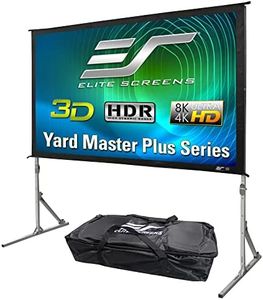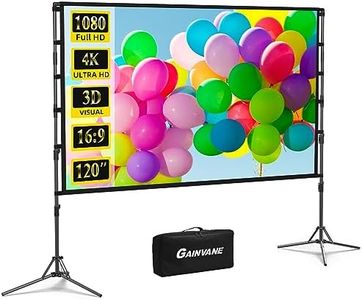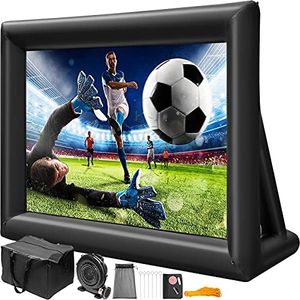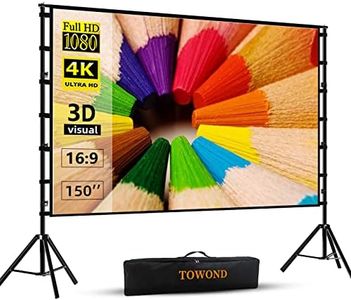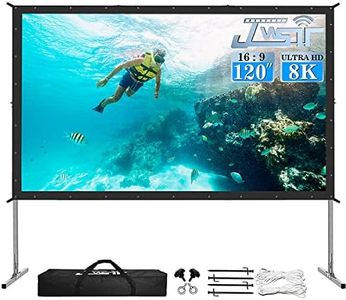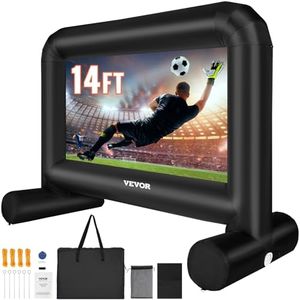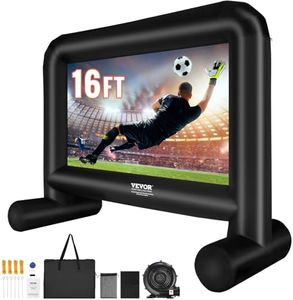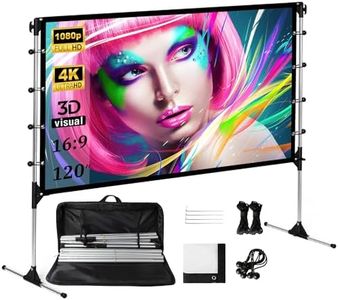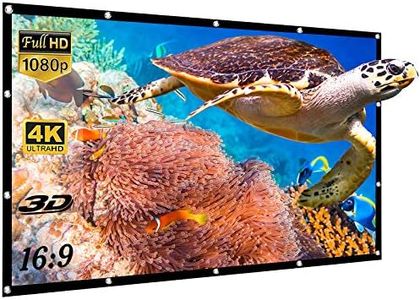We Use CookiesWe use cookies to enhance the security, performance,
functionality and for analytical and promotional activities. By continuing to browse this site you
are agreeing to our privacy policy
10 Best Outdoor Movie Screens
From leading brands and best sellers available on the web.Buying Guide for the Best Outdoor Movie Screens
Choosing the right outdoor movie screen can make all the difference when planning a movie night under the open sky. It's important to take into account where you'll use the screen, how many people will be watching, and how you'll set it up. Understanding the key features will help you find a screen that is easy to handle, provides a great viewing experience, and suits your specific needs for outdoor use.Screen SizeScreen size refers to the diagonal measurement of the display area, usually given in inches or feet. It's crucial because it determines how many people can comfortably see the movie and how immersive the experience will feel. Smaller screens (under 100 inches) are good for intimate gatherings, while mid-sized screens (100–150 inches) work well for backyard family nights, and larger screens (over 150 inches) are suitable for big crowds at community events. To choose the right size, consider the number of viewers and the space available—make sure the screen isn’t too big for your yard or too small for your audience.
Aspect RatioThe aspect ratio is the relationship between the width and height of the screen, commonly 16:9 or 4:3. This matters because using the right aspect ratio will match most videos and prevent wasted screen space or weird black bars. A 16:9 ratio is standard for most modern movies and streaming, while 4:3 is more old-fashioned and fits some older films or presentations. Select the aspect ratio based on what kind of content you’ll watch most often.
Material QualityScreen material affects picture clarity, brightness, and durability. Look for fabric that is wrinkle-resistant and designed for outdoor use to withstand wind and weather. Matte white is common for good color and brightness, but some screens offer special coatings to enhance the viewing experience, especially in daylight. Choose a durable, easy-to-clean material if you plan to use the screen often or if outdoor conditions are unpredictable.
Portability and SetupPortability means how easy it is to transport and set up the screen. Some screens come with frames that fold or collapse, while others are inflatable. Portable screens are ideal if you plan to move locations or need quick setup and takedown. If you’re setting up in a fixed spot, a heavier, more permanent frame may be fine. Consider your storage space and how often you’ll need to assemble or move the screen.
Stability in WindOutdoor conditions can change quickly, so stability in wind is important. Screens might include tie-downs, stakes, or weighted bases to keep them upright. Lightweight screens can blow over easily but are simple to move, while heavier models are better for breezy areas. Think about the typical weather where you’ll use the screen and pick one with enough support for your needs.
Viewing AngleThe viewing angle is how far off to the side people can sit while still seeing a clear picture. A wider viewing angle means more people will have a good view, even if they’re not directly in front of the screen. For larger gatherings or places with spread-out seating, a wide viewing angle is helpful. For small groups sitting close together, this is less critical.

